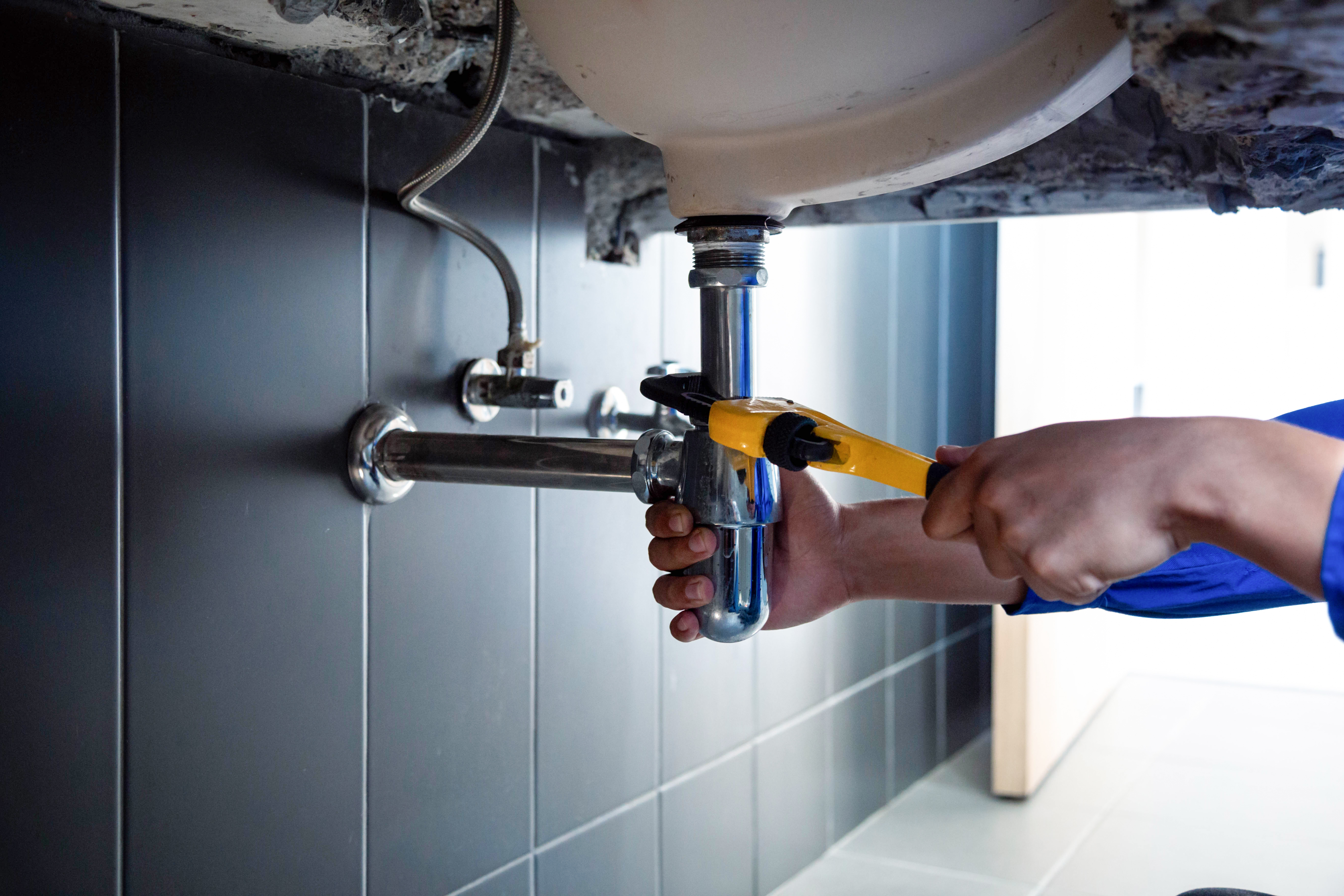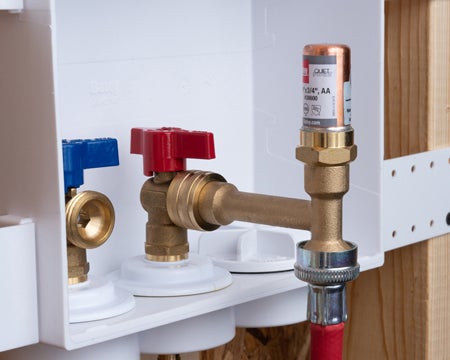Do you find yourself trying to locate selective information on Understanding Water Hammer And How To Stop It?

Intro
Have you ever switched off a tap and listened to a loud bang or knocking sound coming from your pipelines? That distressing sound, typically called an unexpected thud or clunk, is known as water hammer. It's not simply an irritating peculiarity of older homes-- water hammer can take place anywhere, and if left unattended, it can result in even more considerable pipes troubles. In this article, we'll debunk water hammer, explore its reasons, and discuss functional means to fix and avoid it. Consider it as your ultimate guide to taming those rowdy pipelines finally.
Unexpected Valve Closure
Quickly shutting off a faucet or appliance can create an abrupt water circulation stop. Dishwashers and cleaning machines, which have automatic shutoffs, are usually offenders in producing these unforeseen stops.
Improper Pipeline Sizing
Pipes that are as well little for the amount of water moving through them can increase the probability of water hammer. Restricted room indicates higher rate, and greater rate implies more powerful pressure surges.
High Water Pressure
Excessive water stress not just wastes water and money but additionally enhances the impacts of water hammer. The even more pressure behind the flow, the tougher it hits when forced to stop.
Why is Water Hammer a Trouble?
You might question, "Is water hammer simply a noise problem?" It's more than that. While the noise can be bothersome, the real difficulty exists underneath the surface.
The Science Behind Water Hammer
Water hammer is fundamentally concerning kinetic energy. When water relocates with pipes, it lugs energy. If something interrupts that movement-- like a shutoff closing as well swiftly-- this momentum changes right into a stress surge. Pipes, installations, and valves experience this spike in stress, usually leading to that banging sound you dread.
Typical Reasons For Water Hammer
Recognizing the origin of water hammer is the initial step to solving it.
What is Water Hammer?
Water hammer is a shockwave of pressure that happens within your pipelines when water flow stops or changes direction suddenly. Think of a group of runners dashing down a narrow corridor, just to have a door slam shut at the end. The abrupt stop triggers a domino effect, resulting in an accident of bodies. In your pipes system, water acts like those joggers, and when it's forced to stop unexpectedly, it produces stress waves that take a trip via the pipelines.
Noisy Pipeline and House Disturbances
One of the most obvious trouble is the noise. Hearing clunks and bangs whenever you do washing or run the dish washer can interrupt the peace in your house. It could not appear like a big deal in the beginning, however with time, it can wear on your nerves.
Potential Damages to Pipes System
Water hammer puts tension on valves, joints, and installations. Repeated stress rises can weaken links, cause leakages, or even lead to pipe ruptureds-- a pricey and troublesome scenario nobody intends to face.
Long-Term Damage
Over time, persistent water hammer can cause even more constant repair work, early endure components, and a reduced lifespan for your plumbing system. Consider it as small tension gathering right into a bigger concern.
Identifying Water Embed Your Home
Before you can deal with a trouble, you need to validate it's there. So, just how do you understand if you're dealing with water hammer?
Dead Giveaways and Seems
Pay attention for knocking or battering noises when switching off taps or running devices. If the noise appears to find from within the walls, there's a likelihood water hammer is responsible.
Performing a Straightforward Assessment
Attempt turning taps on and off at different speeds. If you see the sound just occurs with particular fixtures or at certain times, you've gathered hints regarding where and when water hammer is taking place.
Temporary Fixes to Manage Water Hammer
If water hammer is driving you up the wall, there are prompt steps you can take.
Adjusting Water Pressure
If your home's water stress is established too expensive, take into consideration mounting a stress regulator or adjusting the existing one. Lowering the pressure can reduce the strength of those shockwaves.
Safeguarding Loosened Pipelines
Pipelines that aren't effectively safeguarded can amplify water hammer noises. Including pipeline bands or cushioning products can aid stabilize them and prevent them from rattling against surface areas.
Using Air Chambers or Arrestors
Air chambers are easy gadgets that trap a pocket of air in a vertical pipe. This air serves as a padding, absorbing the pressure rise. If you do not have them, installing water hammer arrestors can accomplish a similar result.
Long-Term Solutions and Upgrades
If you're searching for more irreversible repairs, it could be time to consider some upgrades.
Putting Up Water Hammer Arrestors
These tools, made especially to respond to water hammer, can be placed near fixtures or appliances. They consist of a piston and chamber that absorb stress adjustments before they spread out throughout your system.
Identifying Your Comfort Level
If you come in handy, you could be able to handle standard repairs like installing arrestors or changing pressure. Yet if you're unsure or if the issue lingers, there's no embarassment in looking for professional aid.
When to Call a Plumber
If your attempts at repairing water hammer fall short or if you presume concealed concerns within your wall surfaces, a qualified plumbing professional can diagnose the trouble precisely and suggest long-term services.
Preventing Water Hammer from the Start
The very best method to take care of water hammer is to stop it prior to it begins.
Including Growth Tanks
A development container connected to your water heater can aid reduce pressure fluctuations brought on by thermal development. By offering water an area to go when heated, you reduce stress and anxiety on pipes.
Updating Pipeline Materials
If you're intending remodellings or taking care of an older home, updating to more flexible piping materials, like PEX, can help in reducing the threat of water hammer. These materials can absorb shock better than inflexible pipes.
Stabilizing Costs with Advantages
Remember, the choice-- pipe damage, leakages, and constant aggravation-- can be far more costly in the long run. Think about these repairs as a financial investment in peace of mind and home value.
Costs and Considerations
Buying avoiding or taking care of water hammer can save you money over time.
Estimating Expenditures
The expense differs relying on the intensity of the trouble and the selected option. Easy fixes like including arrestors or pipe sustains may be reasonably low-cost, while extra comprehensive upgrades could cost more.
Do it yourself vs. Specialist Aid
Some home owners enjoy a great DIY challenge, while others prefer to leave pipes concerns to the pros.
Designing a Proper Pipes Design
If you're building a brand-new home or going through major renovations, get in touch with a plumbing professional regarding designing a design that minimizes abrupt water circulation modifications and consists of correct shock-absorbing components.
Routine Maintenance Checks
Much like your car needs routine solution, so does your pipes system. Routine look for leakages, stress adjustments, and strange sounds can catch concerns early and protect against water hammer from taking hold.
Final thought
Water hammer isn't simply an annoying sound; it's a signal that your pipes system needs focus. By comprehending what triggers it, taking prompt activity, and investing in long-lasting remedies, you can ensure your pipes remain calm and silent. Whether you select an easy DIY method or call in a professional, attending to water hammer is an action toward a much more serene and trusted home.
What Is Water Hammer & How Do You Stop It?
How Water Hammer Is Triggered
Water hammer is often triggered by a valve closing at the end of a pipeline. Tilting disc, swing, and double-door check valves tend to close very quickly, creating high pressure, but water hammer can also be caused by pump failure.
Water is an incompressible liquid, so an impact against a closed valve causes a shock wave that propagates at the speed of sound. It will continue until it hits the next pipe elbow or end of a pipeline.
In homes, water hammer often occurs when a washing machine valve closes after the drum reaches full capacity. Water continues to flow rapidly. It has nowhere to go, so it slams against the side of the pipe, which can bump against other pipes or the frame in the wall.
What Causes Water Hammer?
- High water pressure: Excessive pressure can make the issue more pronounced.
- Quick-closing valves: Appliances like washing machines or dishwashers often have quick-closing valves that create abrupt water flow changes.
- Loose pipes: Pipes that aren t properly secured can amplify the noise and vibrations.
- Faulty air chambers: Many plumbing systems include air chambers that absorb shock. If these become waterlogged, they lose effectiveness.
How to Stop Water Hammer
- Drain the air chamber: Home plumbing systems often have an air chamber to absorb the shock of water when a valve closes. Located inside walls, an air chamber can become waterlogged. This can be fixed by draining your plumbing system, which requires turning off the main water valve and opening the highest faucet in your home. Then drain water from the lowest faucet. The chamber should fill up with air once the water is drained and resolve your water hammer problem.
- Install a water hammer arrestor: This device has an air-filled cylinder to absorb the impact of abrupt increases in water pressure. Most water hammer arrestors are installed between the shut-off valve and supply line via screw-type connectors. One arrestor should be installed on the hot-water supply line and another on the cold-water supply line.
- Adjust the water pressure: If the water pressure in your pipes is too high, the steps above will only work temporarily. You can regulate the pressure by adjusting the pressure-reducing valve, which is often located where the main water supply enters your home. To adjust the valve, turn the handle or, if necessary, with a wrench or screwdriver. The setting should be below 50 pounds per square inch (psi). Reducing water pressure also conserves water, saves energy, and can prolong the life of plumbing appliances.
- Tighten your water supply lines: Sometimes, the U-shaped straps to fasten water pipes to wooden joists or studs aren t tight enough. As a result, pipes can shift and cause noise. You can fix the problem by tightening the screws holding loose pipe straps. Additional straps can be added to improve stability. Pipe straps are usually made of thin metal or plastic, while padded types are available to reduce vibration.
- Insulate water supply lines: Foam pipe insulation prevents pipes from freezing and can create a cushion for loose pipes. They fit easily over your water supply line and can usually be purchased in 6-foot lengths.
Effect of Water Hammer on Plumbing Systems
Water hammer may happen occasionally, but it can cause a sudden plumbing failure or lead to damage over time. It may occur due to excess water pressure in supply lines, or perhaps plumbing pipes have come loose.
Pumps, valves, expansion joints, gasketed joints, and welded joints can be seriously damaged, as can various fittings and connections. Water leaks, ruptured pipes, and property damage can result.
https://villageplumbing.com/blog/what-is-water-hammer-and-how-to-stop-it/

I recently found that blog posting about Understanding Water Hammer - Pipelines, Piping while doing a lookup on the search engines. Appreciated our entry? Please share it. Let another person locate it. We truly appreciate reading our article about .
Call Us Today
Comments on “Your Guide to Water Hammer: Spotting Causes and Implementing Effective Fixes”